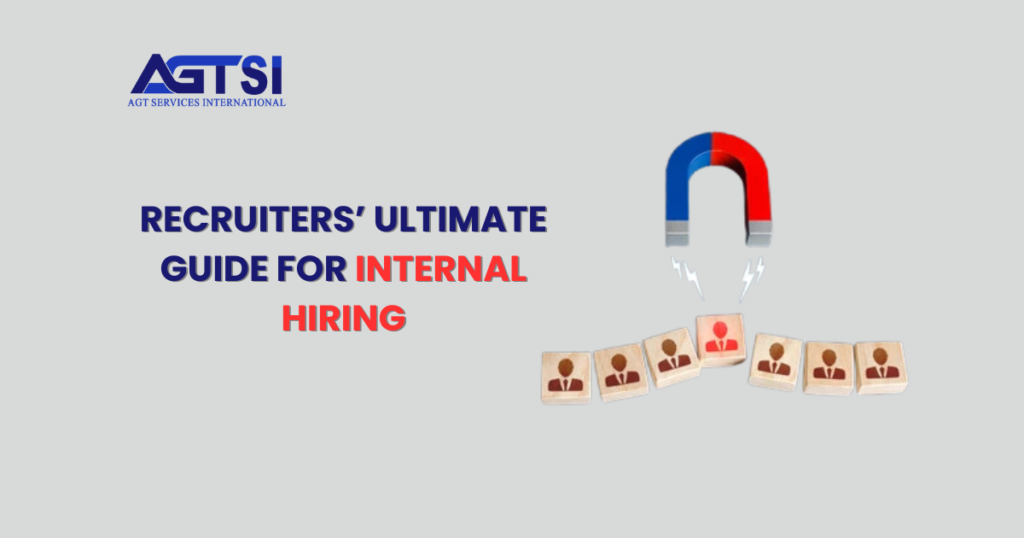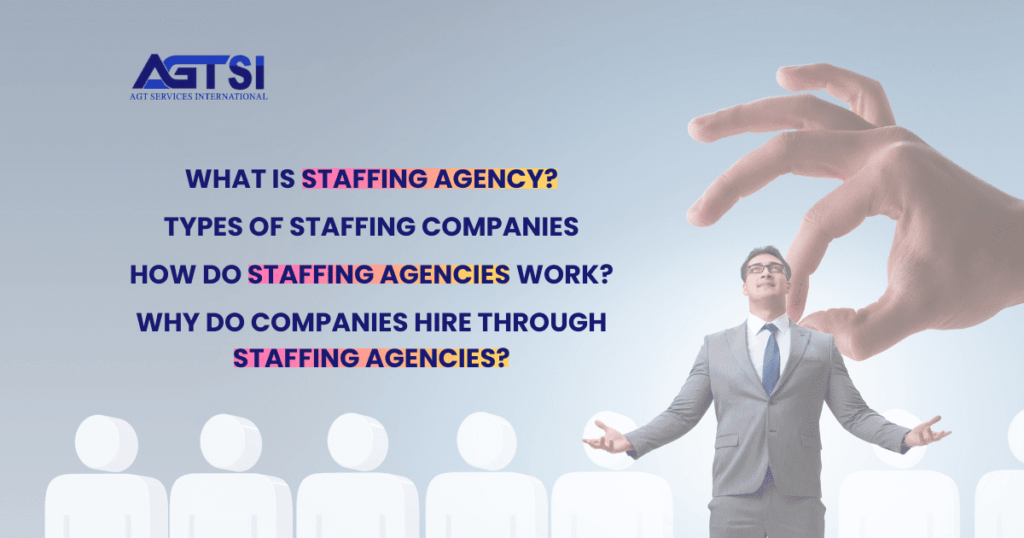Complete Guide of Internal Hiring for Recruiters
In today’s competitive job market, many employees are leaving, so companies are trying different things like better rewards, improving work conditions, and higher pay to keep them. Despite these efforts, there are still gaps left by those who have left or are planning to leave. Posting job openings publicly can take a long time, but internal hiring is a quicker solution. This means promoting or transferring current employees to new roles, which saves money, speeds up training, and makes employees happier. Let’s explore how internal hiring works and how it can help both employees and companies.
What is Internal Hiring?
Internal hiring means filling a job with someone who already works at the company instead of looking for new people from outside. Companies share the job opening with current employees using company channels, which saves time, money, and effort. The method can include promotions, transfers, or reassignments. It boosts confidence because employees know the company well. However, it can limit the talent pool and sometimes lead to discrimination. For the best results, be transparent, offer equal opportunities, provide training, and give feedback to all candidates.
Types of Internal Recruitment
Here are some common types of internal recruitment:
1. Promotions
A promotion is when an employee gets a higher position in the same company. This means the company fills the higher job from within, not by hiring someone new. Promotions reward hard work, keep talented employees, and boost morale by showing opportunities for growth. They also make employees feel valued and recognized.
2. Transfers
When there’s a job opening in another part of the company, employees from different places might be moved there, which is called a transfer. Transfers help make sure the company has the right people in the right places and gives employees new chances to learn and grow. Transfers also let employees share their skills and knowledge across the company. However, too many transfers or ones that happen suddenly can upset employees. Hence, companies need to talk openly about them and support employees as they adjust to their new roles.
3. Converting Temporary to Permanent Positions
Employees who have been in a temporary position for a while might get the chance to become permanent if there’s an open permanent place that suits their skills. A way for both the employee and the company to see if they’re a good fit before making a long-term commitment. This change can offer stability and growth opportunities for the employee and help the company have valuable talent. It may involve assessing the employee’s performance and providing extra training if needed.
4. Referrals
Some companies hire new employees based on recommendations from current staff, which is a reliable and cost-effective method. Employees often refer to people who fit well with the company and the job. Referrals can lead to better hires, faster hiring, and happier employees. But, it’s essential to also look for candidates from other sources to ensure diversity in the workforce.
RECOMMENDED: Recruitment Agency Fee Structure | Hiring Firms Fees Types
Why Internal Hiring?
Guide of Internal Hiring refers to the practice of filling job vacancies with existing employees rather than hiring externally. There are several reasons why companies choose to prioritize internal hiring:
1. Cost-effectiveness
Internal hiring can be more cost-effective than external hiring because it typically requires fewer resources for recruiting, onboarding, and training. Existing employees are already familiar with the company culture, policies, and procedures, which reduces the need for extensive training.
2. Faster recruitment process
Because internal candidates are already familiar with the company, hiring them is faster. Companies don’t need to do lots of checks or interviews to see if they fit in because you already know them. Saves time and helps get the right person into the job quickly. Plus, since they’re already part of the team, they can start making a difference right away.
3. Boosts morale and loyalty
When employees know they can move up in the company, they feel happier and more satisfied with their jobs. Seeing that their efforts could lead to promotions or transfers makes them want to stick with the company for a long time. It’s like a reward for their hard work and dedication. This sense of opportunity not only boosts morale but also creates a strong bond between employees and the company, encouraging loyalty and commitment.
RECOMMENDED: What Is Internal Mobility and Why Do You Need It?
4. Retains institutional knowledge
Internal hires already know how the company works, its rules, and how people interact there. When companies promote from within, they keep important knowledge about how things are done and avoid losing expertise that might happen with new hires from outside. This helps the company run smoothly and keeps things consistent. Also, it shows current employees that hard work and dedication can lead to advancement, which boosts morale and loyalty.
5. Encourages talent development
Giving current employees chances to move up encourages them to keep learning and growing. Builds a culture where everyone is always getting better. When employees know they can advance, they’re more likely to work hard and stay with the company. It’s like a cycle of improvement that benefits everyone. As they develop new skills and knowledge, they can contribute more to the company’s success. Creates a positive environment where people feel valued and motivated to do their best every day.
6. Reduces risk
Internal candidates already know how the company works, so they might need less time to get used to their new job than people hired from outside. This means there’s less chance of hiring someone who doesn’t really fit in with the company. It’s like having a head start because they already understand how things are done here. So, when hiring from within, the company not only saves time but also ensures a better fit for the organization. Lead to smoother transitions and happier employees who are more likely to stay for the long haul.
RECOMMENDED: What is the difference between HR Planning and Manpower Planning?
Advantages of Internal Hiring:
1. Faster Recruitment Process
Internal hiring makes hiring quicker because current employees already know how the company works, its rules, and how things are done. This means less time is spent teaching new hires about these things so they can get started faster. Also, internal hires are already part of the team, so they fit in smoothly and can start making contributions right away.
2. Cost-effective
Hiring people who already work at the company can save money compared to hiring new people from outside. This is because companies don’t need to spend as much on things like advertising the job, interviewing candidates, or getting them settled into the company. Instead, the company can focus on helping current employees move up and take on new roles. This way, save resources and keep the knowledge and experience already in the team.
3. Boosts Morale and Loyalty
Offering chances for employees to move up in their careers within the company can make them happier with their jobs and more loyal to the company. This means they’re more likely to stay with the company for a long time. When people see they can grow and progress in their careers where they work, they feel better about their jobs and are less likely to leave. This boosts morale and job satisfaction, creating a positive work environment where employees feel valued and motivated to contribute their best.
4. Retains Institutional Knowledge
Internal hires already know a lot about how the company works, its rules, and its vibe, which helps keep important company knowledge from being lost. They’ve been around and understand how things are done here. This means they can hit the ground running in their new role without needing to learn everything from scratch. This is a big advantage because they can start being productive much faster than someone completely new. Plus, they’re already comfortable with how things are done, so they can focus more on doing a great job right away.
5. Encourages Talent Development
Internal hiring helps employees keep learning and growing by giving them chances to develop their skills and knowledge. This creates a workplace where everyone is encouraged to improve and discover new things. When employees see opportunities to advance within the company, they feel motivated to keep learning and improving. This not only benefits individual employees but also fosters a culture of continuous development throughout the organization. By investing in their employees’ growth, companies can build a stronger and more capable workforce, ready to tackle new challenges and seize opportunities for success.
6. Reduces Risk
Internal candidates already know how the company works, so there’s less chance of hiring someone who doesn’t fit in. This helps keep the team strong and working well together. Also, since they understand the company’s way of doing things, they can get started in their new role faster. This means less time spent on training and more time being productive. So, hiring from within not only reduces risk but also helps keep things running smoothly.
RECOMMENDED: LinkedIn Recruit Right Strategies: Strategies for Recruiters
Disadvantages of Internal Hiring
1. Limited Pool of Candidates
Relying only on people already working at the company might mean missing out on finding new talents with different experiences and skills. This could limit the variety of ideas and abilities brought to the team. To avoid this, can open up our search to include people from outside the company, too. By doing this, the company increases chances of finding fresh perspectives and diverse skill sets that can help our team grow and innovate.
2. Creates Talent Gaps
Promoting employees to higher positions might leave gaps in their old roles, meaning those positions need to be filled, too. It can take extra time and resources to find new people for those jobs. This can sometimes slow down work or put pressure on other employees to cover the gaps. To manage this, companies can plan ahead and train other employees to step up when needed. They can also consider hiring new people or changing workflows to adjust to the changes smoothly. By being proactive and strategic, companies can minimize disruptions and ensure that the transition is as seamless as possible.
3. Potential for Stagnation
Relying too much on hiring from inside the company might mean missing out on fresh ideas and different viewpoints, which could slow down how much the company grows and innovates. It’s important to balance hiring from both inside and outside the company to bring in new perspectives and keep things moving forward. When companies only look inside, they might not see new trends or ways of doing things that could make them better. So, by welcoming ideas from outside as well, we can keep growing and improving, staying ahead of the curve.
4. Internal Politics and Bias
Internal hiring decisions might be influenced by office politics or personal preferences, which can make some employees feel like there’s favoritism or unfairness in the process. It’s important to make sure that internal promotions are based on merit and not just who’s well-liked. By being transparent and fair in the decision-making process, companies can build trust and ensure that everyone has an equal opportunity to advance in their careers. This helps maintain a positive work environment where employees feel valued and respected, regardless of personal relationships or politics.
5. Lack of Diversity
Without careful thinking, hiring from within could keep things the same in the company, leading to fewer new ideas and different perspectives. This might mean that everyone thinks and comes from similar backgrounds. It’s important to bring in new voices and ideas, even when hiring internally. Encouraging diversity in thought and background can spark innovation and creativity within the organization. By valuing different perspectives and experiences, companies can build a richer and more inclusive workplace culture where everyone feels heard and valued.
6. Decreased Employee Satisfaction
If internal hiring processes are not transparent or fair. In that case, it can lead to decreased employee satisfaction and morale among those who feel overlooked or undervalued.
Best Practices to Follow
1. Transparent Communication
Make sure every eligible employee knows about job openings, what’s required, and how to apply. Being clear helps everyone understand and ensures that everyone has a fair shot at applying. Sharing this information builds trust and fairness among all employees. It shows that the company values transparency and wants everyone to have an equal opportunity for advancement. Encouraging open communication about job opportunities fosters a supportive work environment where everyone feels included and valued.
2. Fair Evaluation Criteria
Make sure the rules for considering employees are easy to understand and fair. These rules should match what the job needs and what skills the employee should have to do it well. This makes sure everyone gets a fair chance based on their abilities, not anything else. Having clear rules helps make sure the process of choosing someone for the job is fair and based on how well they can do it. It’s about picking the best person for the job, not playing favorites. By having these clear rules, companies can make sure everyone has a fair shot at getting promoted or transferred. This boosts morale and keeps things fair for everyone.
3. Encourage Development
Support your employees in growing by providing training, mentorship, and opportunities to develop their skills. Prepares them for future roles within the company and helps them advance in their careers. By investing in their development, the company not only empowers them to take on new challenges but also strengthens their workforce. Encourage continuous learning and offer resources to help them expand their knowledge and expertise. This fosters a culture of growth and improvement, benefiting both the individuals and the organization as a whole.
4. Promote Diversity and Inclusion
Ensure that your company’s internal hiring process is inclusive, welcoming individuals from diverse backgrounds. Provide everyone with an equal opportunity to apply and progress in their careers. This approach ensures that all employees feel valued and have a fair chance to advance. By actively seeking candidates from various backgrounds and offering support and development opportunities, you can create an environment where everyone can thrive and contribute their unique perspectives and talents to the company’s success. Remember, diversity strengthens teams and fosters innovation, leading to greater overall success for the organization.
5. Provide Feedback
Offering constructive feedback to employees who apply for jobs is important. It helps them understand areas where they can improve and motivates them to keep developing their skills. Think of it as providing a roadmap for their professional growth. By receiving feedback, employees can identify their strengths and weaknesses, allowing them to focus on areas that need improvement. This not only benefits the individual but also contributes to the overall success of the team and organization. Regular feedback sessions foster open communication and a culture of continuous improvement, leading to better performance and job satisfaction.
6. Maintain Confidentiality
During internal hiring, it’s important to keep things private to respect everyone’s privacy. Avoid sharing personal information about applicants or how they’re chosen. This ensures that everyone feels safe and respected while applying for new roles within the company. By maintaining confidentiality, employees can trust the process and feel confident in their applications. It also fosters a culture of professionalism and fairness within the workplace. Remember, confidentiality is key to creating a positive and respectful environment during Guide of Internal Hiring.
7. Consider Career Paths
When a company chooses to hire from within the company, consider what employees want to achieve in their careers. Match up their skills and interests with the available jobs. This helps to keep them feeling motivated and happy at work. When employees feel like their job fits their goals, they’re more likely to stick around for a long time, which is good for both them and the company, by helping your employees find the right fit within the company, investing in their future success and the success of your business as a whole.
8. Support Onboarding
Support employees in their transition to new roles by providing them with the necessary assistance, such as training sessions and essential tools. This support enables them to adjust swiftly to their new responsibilities, fostering a smooth and successful start in their new positions. Additionally, offer continuous guidance and motivation as they guide their roles, ensuring that they feel empowered and prepared to excel in their new environment. Regular check-ins and feedback sessions can also be useful, allowing employees to address any challenges they encounter and providing opportunities for continuous improvement and growth. By prioritizing support during transitions, organizations can facilitate the development and success of their employees, ultimately contributing to a more productive and successful workforce.
9. Regularly Review Processes
Keep an eye on how internal hiring is going to see if it can improve. Ask employees and others for their ideas on how to make it even more appropriate and easier. This way, the company can keep getting better and make sure everyone has a good shot at growing in the company. By regularly checking and purifying our internal hiring processes based on feedback, we can ensure that opportunities are available to all and that the workplace remains inclusive and supportive of everyone’s career goals.
10. Celebrate Successes
When someone gets a promotion at work, it’s important to celebrate! Every time someone moves up in the company, it shows that hard work pays off and encourages others to aim higher, too. Celebrating promotions increases morale and makes everyone feel valued. It’s like a team win! Also, it creates a positive atmosphere where people feel motivated to grow and succeed. So, let’s cheer for each other’s actions and keep striving for excellence together!
Final Thoughts
This article gives tips for internal hiring in the company. While it’s good, remember there are downsides too. Try it; start with a trial where both internal and external candidates are considered. Internal hiring boosts morale and saves money but needs clear communication and support. By celebrating promotions and improving the process, the company can create a fair and inclusive workplace where everyone has a chance to grow.




















